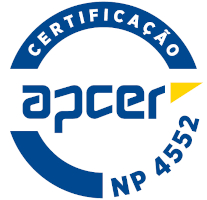Architectural Drawing II
Sustainable Development Goals
Learning Goals
The specific objectives are:
a) Knowledge of the historical evolution of architectural design as a means of disciplinary knowledge and critical analysis of design and architectural works;
b) Training students? skills in specific architectural design techniques and systems;
c) Introduction to the fundamentals of proportion, scale and composition;
d) Development of observation and drawing skills of real and imaginary space;
e) Knowledge of architectural drawing as a means of representation and communication of architectural ideas;
f) Knowledge of the vast lexicon of architectural representation.
Contents
- The role of architectural drawing in the History of Art and Architecture; its relationship with the singular moments of Human History and the transversal influences of and with other areas of knowledge (engineering, science, philosophy, society) fundamentally exploring the drawing of diagrams (from Alberti to the Eames) and constructive detailing.?
b) Analytical Design (part II)?
- Functional analysis;?
- Constructive analysis;?
- Route: La promenade architecturale;?
- Study of the model as a supplement to architectural graphic expression.
c) Lexicon of Architectural Design (part II)
- Bases for the study of architectural representation
Teaching Methods
I work during school hours on research exercises.
Work outside school hours to explore the topics covered, recording graphics in the daily notebook.
Presentation and discussion of results.
Assessment
Exercises will be carried out in and two main practical assignments, one corresponding to an intermediate delivery (30%) and the other corresponding to the final assignment (45%).
The mandatory practical component consists of a graphic record notebook that allows the assessment of the student's progress and their involvement with the curricular unit (20%).
The classification also considers the quality of the work, valuing the student's creativity, participation, evolution and interest (5%).
The final classification, considering the student's frequency (P) and general achievement, will be the weighted average of the two classifications (Av1+Av2) predicted for the semester, and the classification of the graphic diary (DG).
Normal season (EN)
Final Grade = (0.05xP) + (0.75xAv) + (0.20xDG), min. 10 v.
Resource season (ER)
Final Grade = (0.4xEN) + (0.60xER), min. 10 v.
Resource season (ER) = (0.5xEN) + (0.50xER). min. 10 v.
Recommended Reading
G.F.VALDERRAMA, Fernando. Tutoriales de informática para arquitectura: AutoCAD, 3D Studio, Corel Draw, Word, Excel y Presto. Madrid: Celeste Ediciones S.A., 1999.
GÓMEZ MOLINA (ed) Lecciones del dibujo. Madrid: Cátedra, 1997.
J. GARCÍA NAVAS, Dibujar después de 1910. Barcelona: Ed. U.P.C., 1997.
LE DUC, VIOLLET, Historia de una casa. Ed. Anagrama
R. TUFTE, Edward, The Visual Display of Cuantitative Information. Graphics Press LLC, 1983
R. TUFTE, Edward, Envisioning Information. Graphics Press LLC, 1990
R. TUFTE, Edward, Visual Explanations. Graphics Press LLC, 1997
R. TUFTE, Edward, Beautiful evidence. Graphics Press LLC, 2006
S. NAMBERT, El dibujo: técnica y utilidad. Madrid: Hermann Blume, 1985
SCHMIDT, Petra; TIETENBERG, Annette y WOLLHEIM, Ralf (editores), Patterns in Design, Art and Architecture, Birkhäuser, Publishers for Architecture, 2005.
Teaching Staff
- Paula Alexandra Caeiro Esteves Pinto [responsible]





















